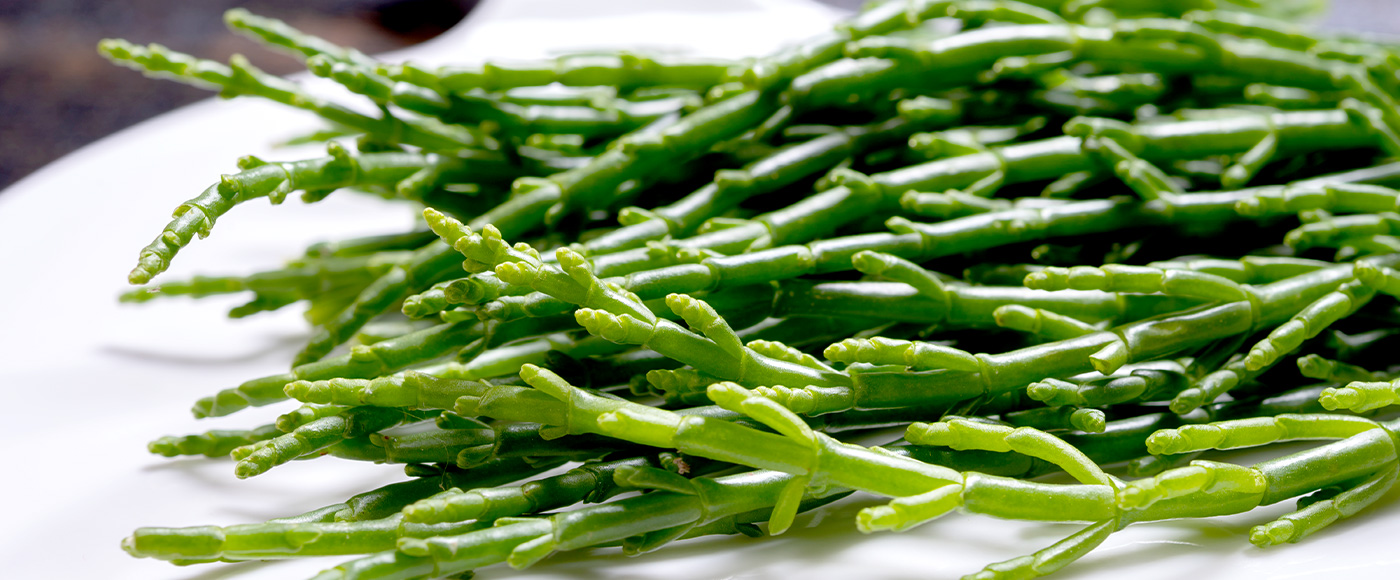1. Fertile swamps
Robust and with a bright green hue, samphire (Salicornia europaea) grows in dense clumps along coastal marshes and the shores of salt lakes. This halophyte—a plant that grows in environments with high salinity—has fleshy and multi-segmented stems that can reach up to 30 cm. It thrives all over the world. In Canada, peak samphire season is from late spring to summer.
2. What’s in a name?
It’s not that easy to navigate the various designated names of this plant. Whether in market stalls or on restaurant menus, samphire appears under several different names, without unanimous agreement on which is best. As with many niche vegetables, all that’s left is regional preference. Knowing this, if you ever come across names like sea asparagus, glasswort or pickleweed, know that they are all samphire.
3. Salty taste
Samphire retains water even after it’s been picked, which is why it has a salty taste. It’s therefore necessary to scale back the salt when cooking it. If you want to make the most of its flavour and crispness, samphire tastes wonderful raw in salads, blanched and even fried, especially with a tempura batter. You can even marinate it by adding it to boiling water with a little vinegar, sugar, kosher salt, garlic and a bay leaf. Refrigerate and consume within seven days. Note that you can also find samphire marinades in grocery stores.
4. Happy marriage
Given the environment in which it grows, it’s only natural that samphire pairs best with seafood. Oysters can be elevated with the addition of marinated samphire, while a shrimp stir-fry can also get a kick from this herb. As for salmon, try butter, garlic and sautéed samphire. The herb is perishable, so it’s best to eat it when fresh. Rinse and dry the shoots before putting them in the fridge, wrapped in a damp paper towel and in an airtight container. They will keep for about one week.
5. Easy to grow
Why not grow samphire right at home? With a bit of care, it can thrive in the garden or on a window sill. Plant the seeds in well-drained, lightly sandy soil where they can get some sun. Also, water them regularly by adding 5 ml of sea salt for every 500 ml of water. Samphire is an annual plant that regenerates. For maximum flavour, pick the young shoots before the plant blooms, which usually occurs from June to August. All that’s left is to prepare those marinade jars!


